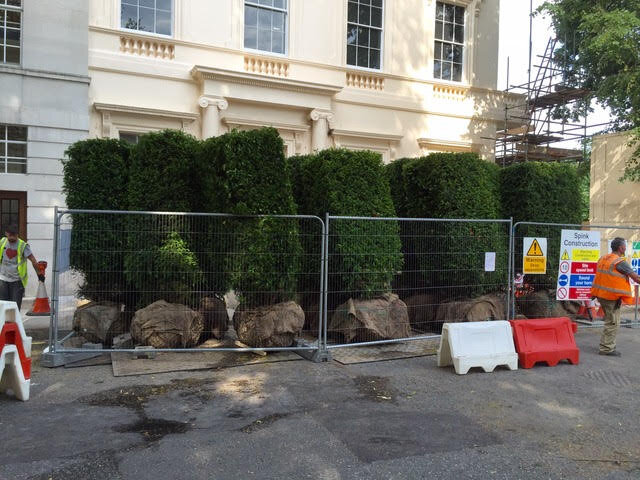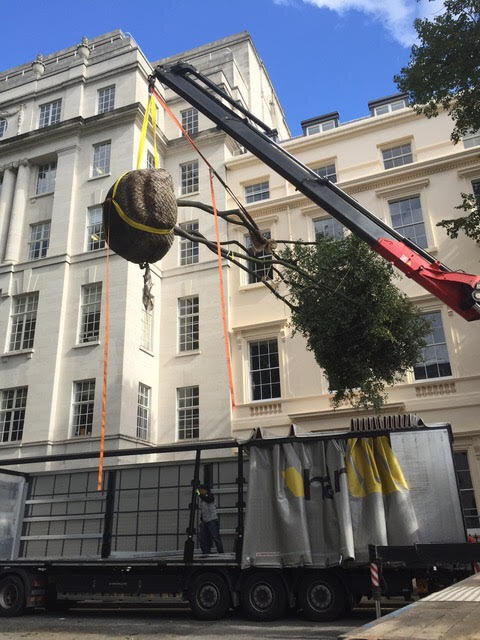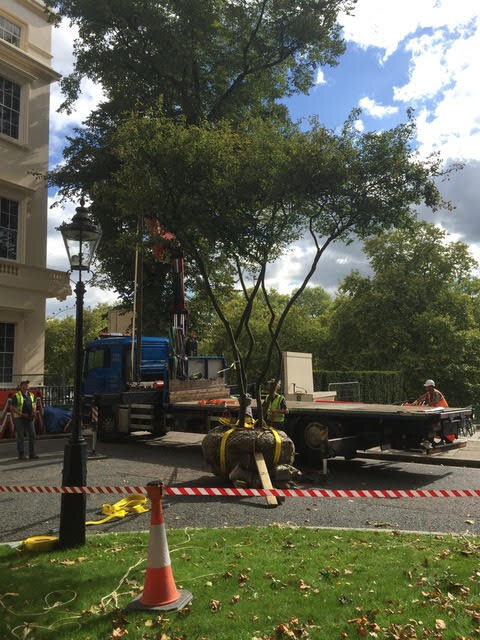Prior planning and potential pitfalls for planting
Proper scheduling is vital when you are ordering and planting specimens. Our guide below will prevent the disappointment and wasted money that comes from failing to plan ahead.
Timely ordering
Order your specimens between November and April, the dormant season when the greatest range is available. By April nurseries are at their busiest and stock vanishes quickly as everyone wakes up to the fact that spring has arrived: even if you can find what you need, you may have left it too late to book the best contractors, who will already be busy on site.
Planned potting
If you miss the lifting season (broadly the end of April), you can still buy plants that have been potted up but they need time to root through before they can be planted. Large specimens will not be well enough rooted even by July. You therefore need to plan your project well in advance. You may want to start planting in March then add more specimens in May/June and again in August/September or later. For May/June you will need plants that were potted and rooted through the previous year.
Summer scheduling
Summer deliveries pose their own problems, because it can sometimes be too hot to ship plants. Specimens coming by truck from Holland or Germany will be in transit for two or three days and nurseries want to avoid damage at all costs. They will load plants on a Monday for Wednesday/Thursday delivery so they are not sitting in a lorry over the weekend – and a planting schedule needs to take this into account.
A case study in streamlined scheduling – Carlton Gardens
On this high-profile project we planted a stunning garden for Spink Property in collaboration with landscape designer Christopher Bradley-Hole.
With 200 Taxus baccata to be planted as a showstopping hedge we needed to ensure they were in optimum condition:
Superb Taxus were identified 18 months before they were needed so the nursery could nurture them to be uniform in height and size through precision trimming.
Alaster knew they needed to be planted in July so the nursery supplied them rootballed. For two weeks before they were lifted from the field where they had grown they were watered heavily. When a dry rootball is lifted the soil around it crumbles but a wet rootball holds moisture much better. Proper hydration also prevents stress when plants are lifted, transported and planted.
The specimens were shipped on a refrigerated lorry and when they arrived in London on the hottest day of the year (36 degrees) we covered them in shade netting to avoid scorching and kept them well watered.
We tucked them safely into the ground quickly, and adopted a strategy that cost more but meant we did not lose a single plant. The cheapest route would have been to have all the specimens delivered in one go, with half of them then sitting on the ground for two to three weeks until the next phase of the garden was ready for planting. Instead we scheduled staged deliveries through the summer.
The result was that this magnificent Taxus hedge started growing almost immediately after planting and by the end of the summer had put on significant growth – a mature instant hedge!
It’s our years of expertise that mean we can do amazing things.
Call us today to find out more.
You can reach us on 0207 305 7183 or email at enquire@alasteranderson.com







